Gisela of Bavaria or princesses don't have it easy either
Gisela of Bavaria or princesses don't have it easy either
The Danube is the backdrop to many adventurous biographies: daredevil commanders have left their mark, as have intrepid missionaries, tricky smugglers and inquisitive explorers. Most of these vitae, however, seem pale in comparison to the life of the Bavarian princess Gisela, which was downright cinematic. Admittedly, a kitschy, romantic fairy tale film adaptation would not turn out well, but a rousing historical drama would. Around the year 1000, life was not always easy, even for a princess...
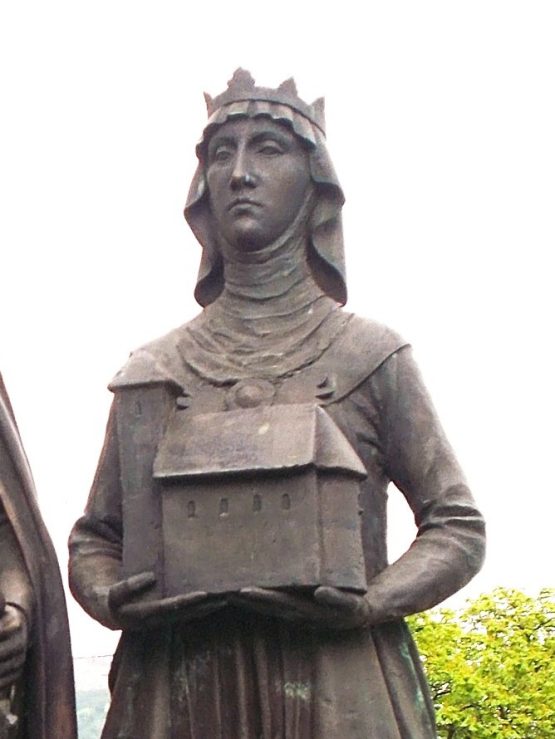
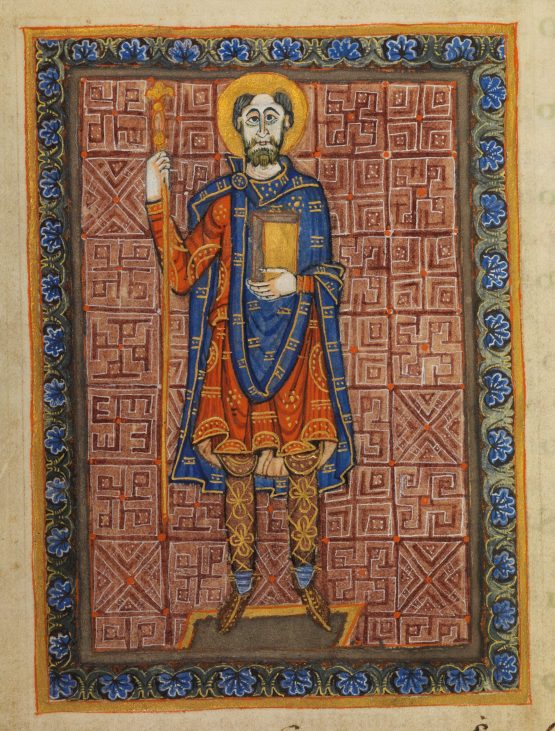
Gisela came from a good, no: from the best family. She was probably born in 984 or 985 as the eldest daughter of the powerful Bavarian Duke Henry II "the Quarrelsome" and was thus also the great-granddaughter of King Otto the Great. Gisela's family thus belonged to the absolute high society of the empire. Even the royal crown of the East Frankish Empire seemed within reach. Gisela enjoyed an education in a Regensburg monastery, and may even have been a student of the scholar Wolfgang von Regensburg. It was quite common for noble girls to be educated. Admittedly, the aim was not to enable children to lead as independent a life as possible through education. On the contrary, the paths of life were usually mapped out at an early age and the children learned what they would need for their future tasks. For Gisela, it was clear that as the first-born daughter of the Bavarian duke, she would sooner or later be married off to a prince out of political calculation. With a certain amount of charm, education, etiquette, piety and, above all, tenacity, she would have to find her way around a foreign court and, at best, represent the interests of her family. Sooner or later, the day would come.
The day came very early. Gisela was probably only ten years old when she learned to whom she was to be married: The chosen one was Stephan, the son of the Hungarian Grand Duke Géza. The girl's reaction - because it is irrelevant - has not been handed down. However, we can assume that Gisela would not have been very enthusiastic. The Hungarians were considered by many contemporaries to be a wild bunch, malicious sources describe them as barbarians, more animals than people. But apart from all the propaganda, one has to admit: The Hungarians were "different." Shortly before the year 900, they had migrated from the Eurasian steppes to the Carpathian Basin as an equestrian people. As gifted horsemen and extremely adept with bows and sabers, the Hungarians met little resistance. Presumably, the proud Hungarian elite also retained their nomadic way of life for longer, their shamanistic beliefs, their language and their martial arts anyway. For their Christian neighbors in Bavaria and northern Italy, the Hungarians were both fascinating and frightening. The cavalry warriors knew how to take advantage of this. Whether on behalf of Christian financiers or on their own account, they overran half of Europe with raids. However, the lucrative business model had an expiration date. The German kings slowly adapted to Hungarian warfare and in 955 defeated the main army of the Magyars on the Lechfeld near Augsburg. What followed was an unprecedented reorientation of the Hungarian dominion. The tribal order disintegrated and the Arpad clan overtook the competing families. Immediately, a restructuring along the lines of the European monarchies began, for which even Christian missionaries were brought into the country. The "right" faith was, after all, an important basis for getting a seat at the poker table of the powerful. Leading by example, Géza had himself and his son Vajk baptized in 985. The latter was given the Christian name Stephen. And it was precisely this name that little Gisela was to take as her husband. Her father Henry and Grand Duke Géza had probably already agreed on this as part of a peace treaty. By the time the wedding took place, Gisela's father was already dead, but her older brother and new Duke Henry was still committed to the project. And so Gisela and her court were sent down the Danube to the Hungarian kingdom, where she met Stephen, who was about fifteen years her senior, and the marriage took place.
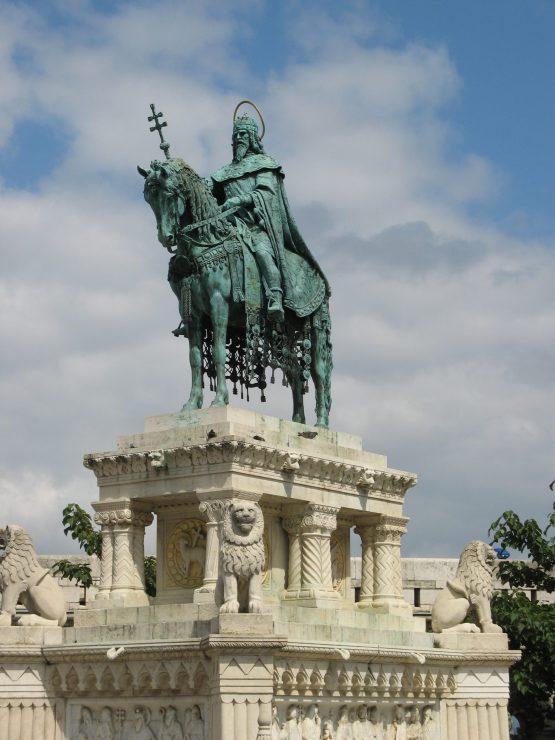
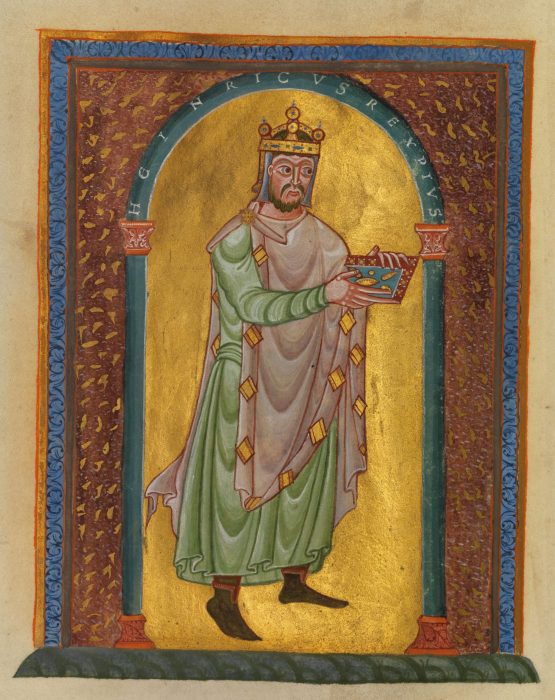
How Gisela settled in at the Hungarian court, which at that time resided mainly in Esztergom and Székesfehérvár, is not known. Her own court certainly influenced the Hungarian environment more than the other way around. Perhaps it was a kind of cultural inferiority complex or cool calculation - in any case, Hungary under Géza and then also under Stephen was very open to Western influences. Friendly contacts with the church also paid off, for probably at Christmas of the year 1000, Stephen was elected Hungary's first Christian king with papal blessing. This meant that they had joined the club of the greats. And Gisela, by now about fifteen years old, was suddenly queen of a rising empire. Shortly thereafter, the bride turned out to be an even better match than expected, for her brother Henry was elected East Frankish king in 1002. From then on, the young Hungarian monarchy adorned itself with Gisela's illustrious lineage and kinship. The royal couple named their firstborn Emmerich, a variation of Henry, and another son Otto. Of all the sons, however, only Emmerich would reach adulthood. He would one day inherit the throne.
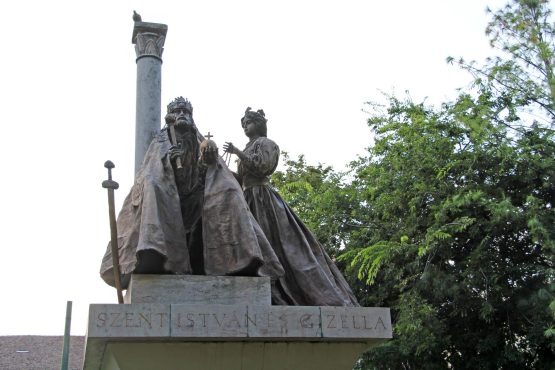
Until that happened, however, Stephen and Gisela had their hands full securing that very throne against the ambitions of other families. The key to this was close cooperation between the king and the church, and so the missionization of the pagan Hungarians was at the top of the agenda. The founding of the monastery of Pannonhalma near Györ was as important a milestone in this as the establishment of the archbishoprics of Esztergom and Kalocsa. It was not by chance that these Christian bases were established along the Danube. The great river played a major role in the expansion of the country under King Stephen. And what role did Gisela play in this? There are reports as early as the 11th century that attribute the Christianization of the Hungarians to the queen. Some even claim (falsely) that she herself first urged Stephen to be baptized. The queen was sometimes even stylized as the "apostle" of Hungary. This may be exaggerated, but she is documented as the founder of several churches and monasteries. For a woman of her position and with her family background and networks, it is quite likely that she played an important role in the reconstruction of the Hungarian Empire. In any case, her presence and good contacts to the West led to a constant immigration of "skilled workers" from German lands to Hungary, from monks to merchants to knights, who sought their fortune in the "Wild East".
So much for the success story. That Gisela's position would one day falter was probably already foreseeable in 1031, when the heir to the throne and only remaining son Emmerich died while hunting. King Stephen himself was untouchable during his lifetime, but what would happen when he was no longer there? A foretaste was already offered by the revolt of Stephen's relative Vazul, who claimed the succession and was blinded for it at the behest of the king. Later sources held Gisela responsible for this and thus established a long-lasting counter-image to the pious propagator of the faith.
In 1038, after a reign that lasted almost four decades, King Stephen died. He declared his nephew Peter Orseolo, son of the Doge of Venice, his successor. Hardly crowned, Peter made a number of powerful enemies among the Hungarian magnates and prelates through decisions that were as arbitrary as they were unfortunate. He even had the queen dowager Gisela placed under arrest and started a war against Emperor Henry III. It was this same Henry III who, during a campaign against Hungary - Peter had already been overthrown by this time - freed the unfortunate ex-queen and took her back to Bavaria.
When Gisela was on her way back to her homeland up the Danube, she was already in her late fifties. As a widowed noblewoman, entering a convent was an obvious choice in such a situation, and - as is still often the case today with more or less deserving politicians - Gisela was also able to take one last career step: She became abbess of the Benedictine monastery of Niedernburg in Passau, which benefited from her still excellent connections. Gisela probably died in 1060 at the proud age of about 75. In 1908 her tomb was identified, which is still a popular destination for pilgrims - especially from Hungary.
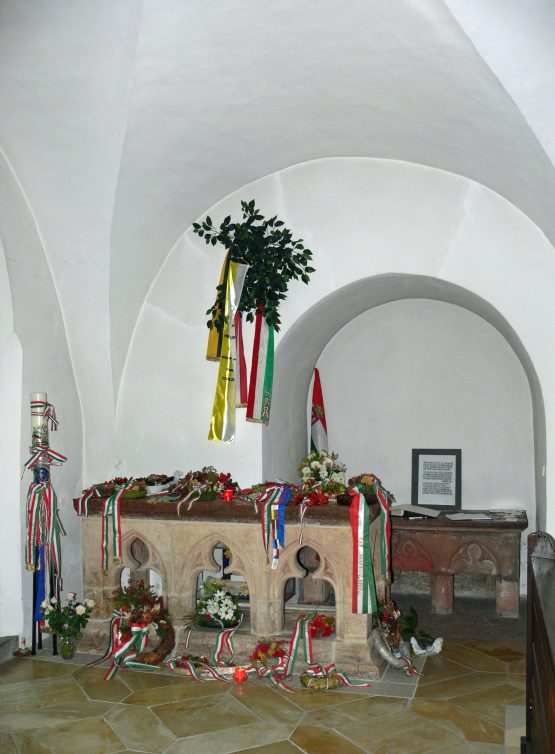
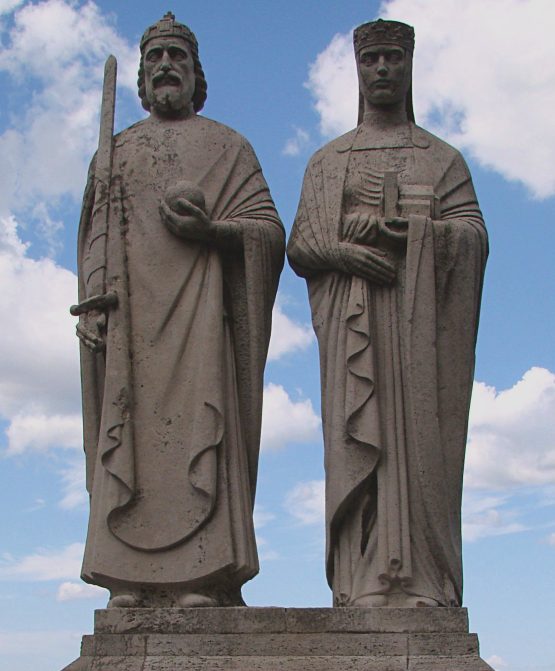
Gisela is a fixed figure in Hungarian historiography. She has been immortalized as a statue in Szeged, Nagymaros and, last but not least, in Veszprém, which can call itself "European Capital of Culture" in 2023. There, where Gisela is said to have donated the cathedral church and where she even resided, the memory of the queen is held particularly high. A cultural festival bearing her name is organized every year. The recent opening ceremony for the Capital of Culture Veszprem was also clearly marked by Gisela, who was celebrated as a pan-European connecting figure. This could be more important today than ever, as Hungary and Europe are drifting apart on many issues, a development that can only be detrimental to both. In this sense, it might actually be worthwhile to remember a time when Hungary, also and above all thanks to a princess from Bavaria, found its connection to Europe without giving up its own identity.
